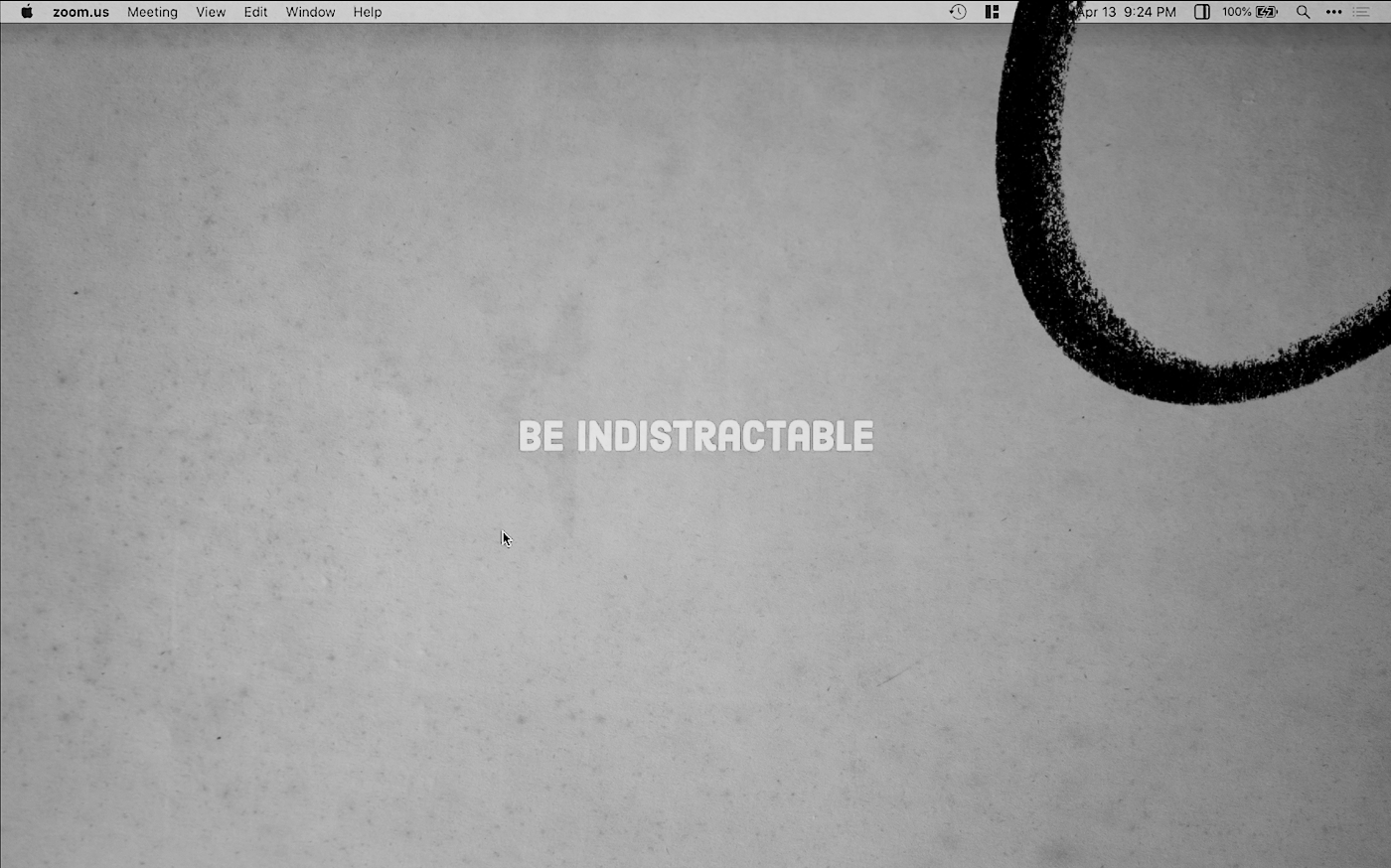
Hello!
Welcome back to Action Items a series of articles where we condense and extend each of our interviews into actionable bullet points — only for paid subscribers.
This week we’re revisiting my interview with Nir Eyal, author of Hooked and Indistractable. I think it’s especially relevant for a week like this one, where we’re all struggling to concentrate.
Today’s Action Item is 996 words or 5 minutes of actionable insights.
Let’s dive in!
🧠 What is distraction anyway?
Nir thinks that the biggest problem in getting work done is distraction. But he has a unique definition for it: distraction is doing anything that you didn’t plan to do.
He thinks that the opposite of distraction is not focus, but traction: traction is doing what you planned to do, and therefore anything that moves you closer to what you want to accomplish.
He’s developed a cohesive 4-step strategy framework to increase traction in your life:
- Master internal triggers
- Make time for traction
- Hack back external triggers
- Prevent distraction with pacts
🤓 MY REACTION
The thing that appeals most to me about Nir’s framework is that he removes the expectation that any of this should be easy, or that there are one-size fits all solutions to productivity problems. Sometimes work is just hard—and the way to solve for being productive again varies from person to person, and situation to situation. The key is to have a toolbox of strategies that work for you—and that’s what Nir is contributing.
🙅🏾♀️Step One: Master Internal Triggers
Most of distraction is caused by internal triggers — distraction is our default response to uncomfortable feelings like boredom, loneliness, fatigue, and uncertainty.
Nir thinks that the first step to mastering distraction is to master our internal triggers. He’s developed a toolbox to deal with these uncomfortable feelings. Here are a few of his tools:
- 🧘♀️ Get comfortable with discomfort: When you’re struggling with negative feelings that are driving you toward distraction, learn how to examine them with curiosity, and watch them rise and fall. A solid meditation practice can be helpful here.
- 🔧 Set process goals: Don’t measure outcomes, measure process. If you want to write more don’t write 1,000 words a day—just make sure you’re spending 2 hours a day at the computer trying to write. Time is an input you can control, make it your friend.
- ⏲ Use the 10-minute rule: If you have the urge to Google something while you’re trying to focus, write down the question on a piece of paper and set a timer for 10 minutes. Usually by the time the 10 minutes are up, whatever you needed to look up won’t feel as relevant.
📕 Read More: I talked about process goals in this Member’s Only essay, You Have to Get Good Before You Get Better.
☀️Step Two: Making time for traction
Once you have the tools to master your external triggers, you have to plan your time. Remember that distraction is doing anything that you didn’t plan to do—so to get rid of distraction you have to know how you should be spending your time.
Nir blocks out time for every activity on his schedule—from writing, to emailing, to family time. That way he knows, at any given time of the day, what he should be focusing on.
✅ Step Three: Reduce external distractions
Once you’ve made time for traction, it’s important to make sure external triggers don’t get in the way of your ability to focus. Nir recommends doing the following to create a healthy environment:
- Nix desktop clutter, virtual and real. (Want to do this automatically? Try Sparkle—included in your membership.)
- Silence notifications.
- Shut everything except the programs you need to do your work.
- Use a concentration crown to tell your kids and your colleagues that they shouldn’t disturb you.
🎈 THOUGHT BUBBLE
This one has been really hard for me this week. I’ve felt extremely pulled to follow the election results as they’ve come in, and my productivity level has suffered as a result. During times like these I’ve fallen back on things like my system for using Screen Time to limit my access to external distractions as much as possible.
💵🔥 Step Four: Make a pact
If you’ve done the last three steps of the process and you still can’t get yourself to do the things you need to do, the last thing to try is to make a pact.
A pact is an agreement with yourself or another person to perform some action, where there are negative consequences if you don’t do the thing you’ve agreed to.
Here are a few ways to make pacts work for you:
- Make a pact with a friend where the loser has to donate $100 to a political cause they disagree with.
- Make a pact with a friend where the loser has to burn a $100 bill if they miss a day.
Pacts work to help you do things you are most likely to skip out on—like writing or email or working out. The “punishments” that are used in these kinds of pacts may feel over the top, but having a negative consequence that feels really bad is a good way to get yourself to do the things that you don’t want to do.
📣 Key Takeaway
“When most people talk about habits, what they’re saying is, ‘I want something that’s difficult to become effortless. I want the benefits but I don’t want it to be hard. Well, I have news for you: some things are just hard. There’s no way of getting around it.”
🤝 Make a Pact With Me
What’s something that you’ve been struggling to motivate yourself to do consistently? Reply to this email and let’s make a pact together:
Tell me what you want to accomplish between this Friday and next Friday. Next Friday, I’ll publish a list of who accomplished their goals and who didn’t.
Will you accept the challenge?
For the full story on Nir read the article here.
Did you like this summary? Have ideas for how I can make it better? Leave feedback in the comments or the form below!
This article was co-written by Dan Shipper and Annaliese Griffin
The Only Subscription
You Need to
Stay at the
Edge of AI
The essential toolkit for those shaping the future
"This might be the best value you
can get from an AI subscription."
- Jay S.
Join 100,000+ leaders, builders, and innovators

Email address
Already have an account? Sign in
What is included in a subscription?
Daily insights from AI pioneers + early access to powerful AI tools











Comments
Don't have an account? Sign up!